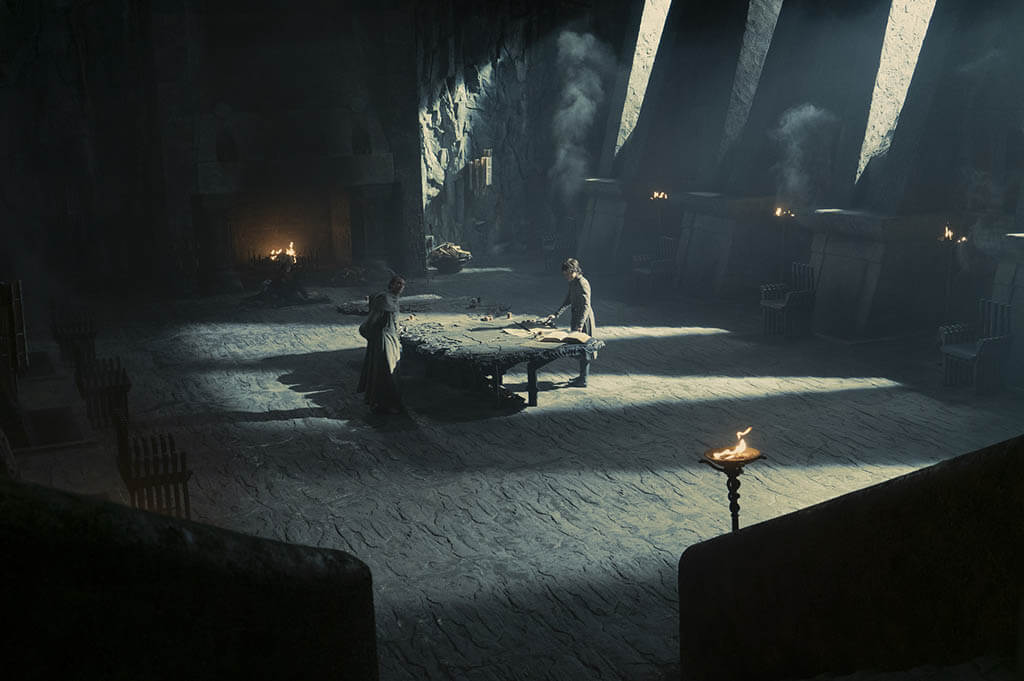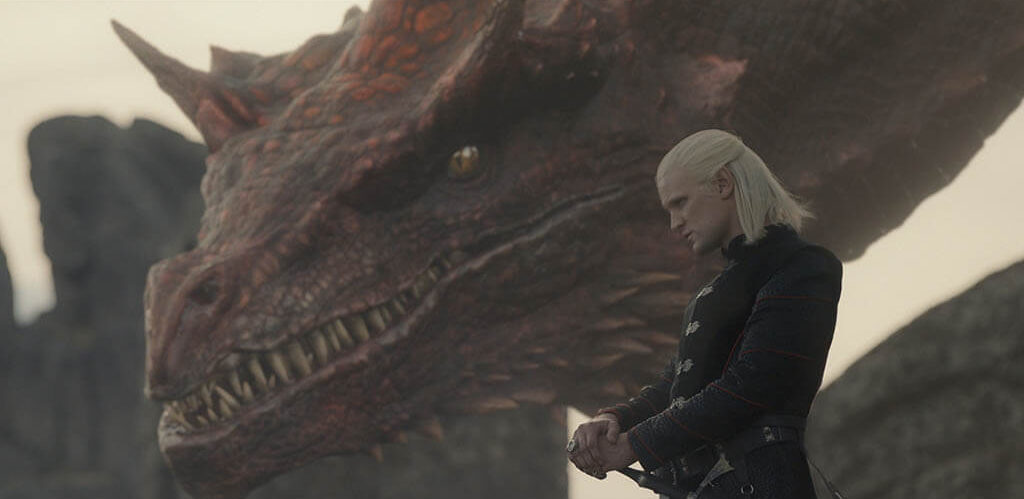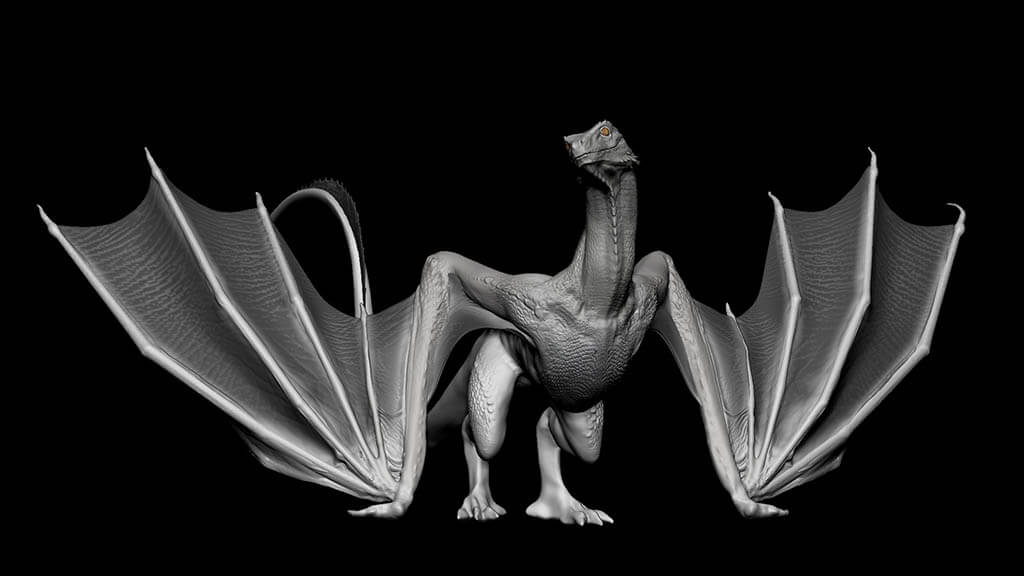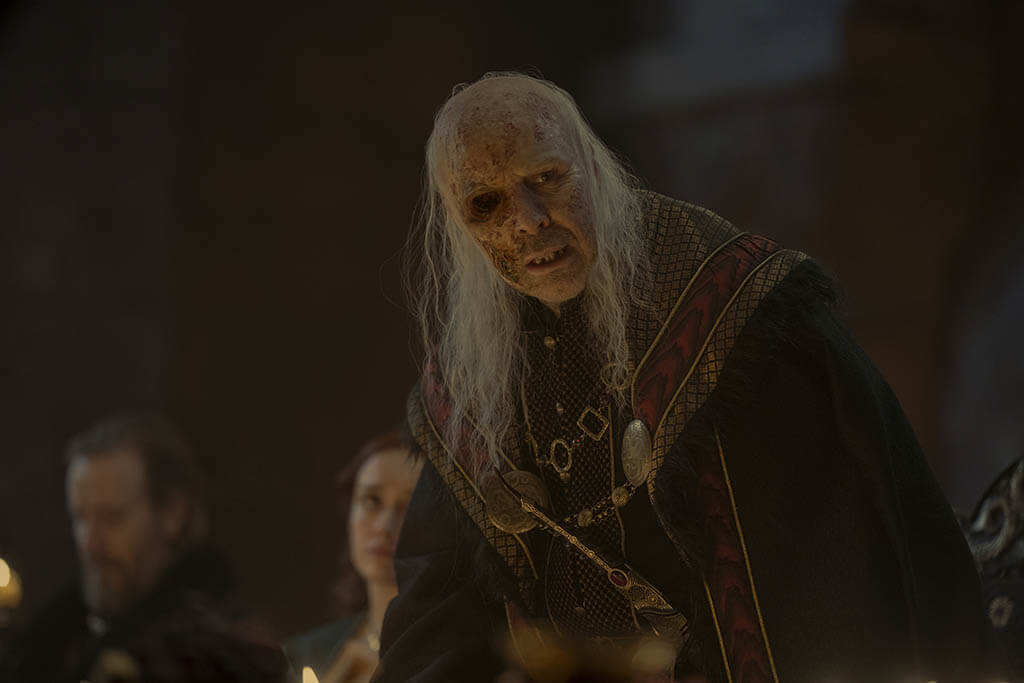By TREVOR HOGG
Images courtesy of HBO.
By TREVOR HOGG
Images courtesy of HBO.

Assisting in deciding what sets needed to be built practically or digitally was having the 10 scripts essentially written before shooting commenced.
Unlike Game of Thrones, the prequel House of the Dragon, which revolves around the decline of Targaryen rule, has to deal with the expectations of its predecessor that push the boundaries of high-end episodic visual effects to achieve filmic quality. The first season consisting of 10 episodes was able to take advantage of the new virtual production stage and Warner Bros. Leavesden Studios, with showrunners Ryan Condal and Miguel Sapochnik collaborating with Visual Effects Supervisor Angus Bickerton (The King’s Man) to achieve the necessary size and scope and many more dragons for the epic fantasy HBO series. (Sapochnik has since moved to an executive producer role.)

The goal was to create a dirtier, grungier and dustier environment than Game of Thrones, which occurs 130 years later.
Bickerton joined the project back in September 2020, and at that point the scripts for the 10 episodes were essentially written. “That’s an important thing to say because as we know all TV productions are still evolving as they’re going along. You need to have settled scripts in order to say, ‘These sequences are going to be done in the volume.’ If we wanted to shoot the interior of Storm’s End Castle in Episode 110, instead of 12 weeks in post to do that environment, we needed 12 weeks prior to shooting to build it in Unreal Engine for texturing, lighting, doing test plays in the volume, to make sure it was coming out right, and working with the DPs and art department to decide which bits we were going to put on the screens and what would be sets.”

Around 2,800 visual effects shots were created for the 10 episodes, ranging from tiny birds in the frame to dragons.

A key principle for dragons is that they keep growing.
Some of the street scenes were captured in Spanish and Portuguese locations, but the rest were shot either on the virtual production stage or in the backlot at Leavesden Studios. “We had an oval space with a 270-degree wraparound screen, and it’s about 65 to 70 feet wide by 85 feet deep,” Bickerton explains. “We hung doors to block off the rest of the oval so we could make an almost 360-degree volume. Above that, we have our ceiling, which was on panels so we could raise and lower them. Normally, you drop that ceiling just inside the wall height. Our screen was 25 feet high. When you’re inside and look up, the ceiling blends into the wall. It’s a balancing act. You have to find a position where it’s slightly the wall height, but the 40 tracking cameras arranged around the screen still need to be able to get a view of the camera in order to real-time track the camera, in order to create the interactive environment on the screen.”
“Once you’ve built this beautiful cathedral, the last thing you want is to start blowing smoke and have hot flames melt the LED panels. But we wanted candles, flame bars, driving rain and smoke. The first thing that we did was to concede some of the screens to create ventilation space for smoke. The screen was lifted above the flame bar element to get it further away from the flame.”
—Angus Bickerton, Visual Effects Supervisor
As with Game of Thrones, House of the Dragon features extensive smoke, fire and rain, which meant that special effects had to occur within the virtual production stage. “Once you’ve built this beautiful cathedral, the last thing you want is to start blowing smoke and have hot flames melt the LED panels,” Bickerton notes. “But we wanted candles, flame bars, driving rain and smoke. The first thing that we did was to concede some of the screens to create ventilation space for smoke.”Additional ventilation was placed under the screens so the air was constantly moving. “The screen was lifted above the flame bar element to get it further away from the flame,” Bickerton adds. “When it came to storm sequences, we had to figure out the orientation of our motion base so we could blow the smoke and rain atmosphere past the actors and it would go across the screen. We could have separate fans blowing it away from the screen as well as off-camera.”

Sunrise and sunsets can be shot over the course of days on a virtual production stage with the same lighting conditions being maintained.

An iconic prop that makes an appearance in House of the Dragon is the Iron Throne.
“[For the flying dragon shot in Episode 110], The Third Floor did the previs that was animated with much simpler dragon assets to make sure that we were doing the right dragon motion. The Third Floor’s simulation files were given to Pixomondo, which tweaked and revised the animation that was then given back to The Third Floor, which rebuilt it for the motion base, volume and camera, and we worked out what camera moves that we had to do with the actors to match the previs.”
—Angus Bickerton, Visual Effects Supervisor
Special Effects Supervisor Michael Dawson and his team built a new motion base that could bank, pitch and rotate. “The motion base exceeded our expectations,” Bickerton remarks. “We got fast movement, good angle changes, could throw the actors around quite considerably and get shakes in their bodies. The Wirecam was more of a challenge to move around fast because you have to ramp up to speed, fly past an actor and ramp down again. [For the flying dragon shot in Episode 110], The Third Floor did the previs that was animated with much simpler dragon assets to make sure that we were doing the right dragon motion. The Third Floor’s simulation files were given to Pixomondo, which tweaked and revised the animation that was then given back to The Third Floor, which rebuilt it for the motion base, volume and camera, and we worked out what camera moves that we had to do with the actors to match the previs.”

Concept art by Kirill Barybin showing the scale of Prince Lucerys Velaryon and Arrax, which is a 14-year-old dragon.

The 2D concept art of Arrax was translated into a 3D blockout by Kirill Barybin.
“[The dragons] ultimately can’t bear their own weight. Vhagar, which is chasing Arrax, is meant to be 103 years old whereas Arrax is 14 years old. Whenever a new member of the Targaryen family is born a dragon is put in the crib with the child so that they develop a symbiosis. But there is only so much control that you have over these dragons. In the shot where you see the big silhouette of Vhagar above Arrax was a signature image that we wanted going into the sequence to show the size of him. In terms of how the motion base moved, Arrax is flappier and smaller, so it has more aggressive motions whereas Vhagar is a huge beast and the motions are a lot more general.”
—Angus Bickerton, Visual Effects Supervisor
A narrative principal is that dragons keep on growing. “They ultimately can’t bear their own weight,” Bickerton notes. “Vhagar, which is chasing Arrax, is meant to be 103 years old whereas Arrax is 14 years old. Whenever a new member of the Targaryen family is born a dragon is put in the crib with the child so that they develop a symbiosis. But there is only so much control that you have over these dragons. In the shot where you see the big silhouette of Vhagar above Arrax was a signature image that we wanted going into the sequence to show the size of him. In terms of how the motion base moved, Arrax is flappier and smaller, so it has more aggressive motions whereas Vhagar is a huge beast and the motions are a lot more general.”

A dramatic action sequence is when Prince Lucerys Velaryon and Arrax are chased by Aemond Targaryen and Vhagar.
There were no static 2D matte paintings as the camera always had to be fluid. “The trick was to always have atmosphere-like particles in the air,” Bickerton reveals. “I remember working on our first environment and asked, ‘Should we add some birds?’ And it worked. There were birds all over the place. They were small in frame but were a key element in bringing life to the shot. Miguel wanted it to be dirtier, dustier, grungier than Game of Thrones because we are taking place 130 years before, so there was a lot of smoke, and King’s Landing has a nastier look.” Bickerton was give an eight-terabyte drive of assets from Game of Thrones by HBO that included the Red Keep and King’s Landing. Explains Bickerton, “They had been built by different facilities for each season, so we had about five or six different variations of the Red Keep and King’s Landing. Our Visual Effects Art Director, Thomas Wingrove, brought in the different models, and we came up with our own fully-realized 3D environment because we wanted to be able to come back to it and know where everything was. In Game of Thrones, they tended to add in bits when needed for each episode.”
“[Showrunner/director] Miguel [Sapochnik] wanted it to be dirtier, dustier, grungier than Game of Thrones because we are taking place 130 years before, so there was a lot of smoke, and King’s Landing has a nastier look. They had been built by different facilities for each season, so we had about five or six different variations of the Red Keep and King’s Landing. Our Visual Effects Art Director, Thomas Wingrove, brought in the different models, and we came up with our own fully-realized 3D environment because we wanted to be able to come back to it and know where everything was. In Game of Thrones, they tended to add in bits when needed for each episode.”
—Angus Bickerton, Visual Effects Supervisor

A signature shot is of shadow of Vhagar flying above Arrax.

2D and 3D techniques were combined to create the disfigured face of King Viserys I Targaryen.
Around 2,800 visual effects shots were produced for the 10 episodes. “If you’re going to have character who is 1/10th the screen size of a dragon, then it’s a digital double,” Bickerton states. “We used digital doubles for some of the fast action; otherwise it’s an element of someone on a motion base, if it’s dragon-riding. We tried to shoot an element for everything. There was quite a lot of face replacement for action and storm sequences.” All of the actors were scanned to various degrees, depending on how much of their performance is needed. Comments Bickerton, “In the tournament at the beginning of Episode 101, there are numerous face replacements. We had to do CG for half the face of King Viserys I Targaryen in Episode 108, towards the end of his final days. We did a lot of 2D warping and distortion to make his neck thinner and get his face to be gaunt. The bit I love is the sheer diversity of the work. There are so many different environments and dragon characters. That’s what I like.”